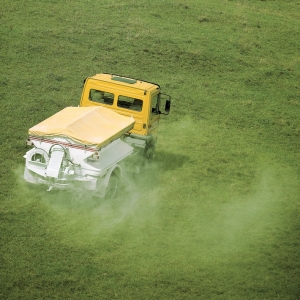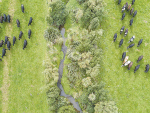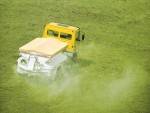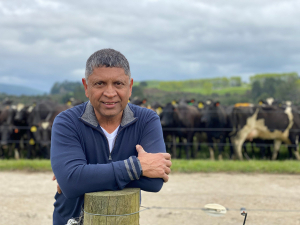Peat soils, in their natural state, have high organic matter content, and low nutrient levels and water table fluctuations, so they behave differently from mineral soils in nutrient transformations and cycling.
There are different types of peat soils, such as bog peat and swamp peat. Bog peats have low nutrients with usually 35-50% carbon content, whereas swamp peats have higher mineral content – 15-40% carbon. Farm management gets tough if different types of peat soil are side by side or layered on top of each other.
To protect productivity, ground water and waterways, farmers with peat soils must pay particular attention to management of nutrients and soil moisture.
Peat soils typically have a low anion storage capacity. This means the leaching of nutrients to ground water will be significant in peat soils. Increased leaching of nutrients can occur when water tables are near the ground surface. Those low nutrient levels, and the tendency of peat soils to ‘lose’ nutrients to waterways easily, means that nutrient management on peat soils involves the use of a suite of practices to protect the environment and maintain productivity.
Implementing correct farm management practices, including the use of the right type of fertiliser, applying it at the right time and in the right amounts, is critical to minimising nutrient losses to water and optimising nutrient use for pasture production.
Applying fertiliser correctly to peat soils will maintain good pasture for longer periods, reducing the need for frequent cultivation and pasture renewal. Lime is also required to increase the soil pH to an optimum level for pasture and crop species. Soil and herbage tests will determine what nutrients peat soils need.
Fertiliser should be uniformly and evenly applied with none outside the target area. The precise placement of fertiliser depends on a number of factors. It requires careful integration of operator skills, sound equipment and appropriate formulation of fertiliser.
It is recommended farmers follow the Spreadmark Code of Practice for fertiliser application, a programme governed by the Fertiliser Quality Council.
Another factor to bear in mind is that, while drainage and cultivation of peat are necessary to establish productive pasture, they lead to irreversible shrinkage of the peat resulting in continued subsidence of the land surface.
Shrinkage is a result of consolidation following water removal and particle breakdown during cultivation, and also as a result of oxidation of the carbon in the soil due to exposure to air. Shrinkage is estimated at about 200mm/year after the initial cultivation, reducing to around 20mm/y as the peat becomes more consolidated. This makes drainage progressively more difficult to manage and can ultimately lead to the complete oxidation of the peat soil.
These factors mean that farming of peat soils can lead to damage to nearby wetlands and peat lakes, so extra care is needed. Waikato’s peat lakes, with their unique ecosystems, are the largest remaining collection of such unique habitats in the country and have attracted international attention.
• Bala Tikkisetty is a sustainable agriculture advisor at Waikato Regional Council. Tel.0800 800 401 or This email address is being protected from spambots. You need JavaScript enabled to view it.











